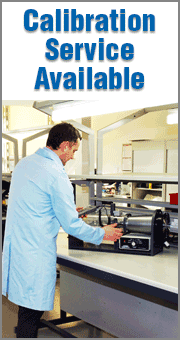
What is the most common indicator that a transducer has been overpressured?
The most common indcation that a transducer has been overpressured is a shift in the zero reading usually in an increasing direction. It may read 5-6 ma or even higher. It can even saturate at a maximum value which is typically around 24 ma.
Still wondering how to decide what type of pressure transducer or pressure transmitter you need? Our interactive
pressure sensor selection tool will take you through all of the requirements for your application and provide a part number and price for the correct transducer.
The pressure transducer housing should be selected to meet both the
electrical area classification and the corrosion requirements of the particular installation. The corrosion requirements of the installation are met by selecting corrosion-resistant materials, coatings, and by the use of chemical seals, which are discussed later in this chapter.
If the installation is in an area where
explosive vapors may be present, the transducer or transmitter and its power supply must be suitable for these environments. This is usually achieved either by placing them inside purged or explosion-proof housings, or by using
intrinsically safe designs.
Probably the single most important decision in selecting a pressure transducer is
the range. One must keep in mind two conflicting considerations: the instrument's accuracy and its protection from overpressure. From an accuracy point of view, the range of a transmitter should be low (normal operating pressure at around the middle of the range), so that error, usually a percentage of full scale, is minimized. On the other hand, one must always consider the consequences of overpressure damage due to operating errors, faulty design (
waterhammer), or failure to isolate the instrument during pressure-testing and start-up. Therefore, it is important to specify not only the required range, but also the amount of overpressure protection needed.
Most pressure transducers are provided with overpressure protection of 50% to 200% of range (Figure 3-12). These protectors satisfy the majority of applications. Where
higher overpressures are expected and their nature is temporary (pressure spikes of short duration--seconds or less), snubbers can be installed (as the one in the image). These filter out spikes, but cause the measurement to be less responsive. If excessive overpressure is expected to be of longer duration, one can protect the sensor by installing a pressure relief valve. However, this will result in a loss of measurement when the relief valve is open.

If the transmitter is to operate under
high ambient temperatures, the housing can be cooled electrically (Peltier effect) or by water, or it can be relocated in an air-conditioned area. When freezing temperatures are expected, resistance heating or steam tracing should be used in combination with thermal insulation.
In this white paper we studied both approaches to
measure pressure in high temperature media.
When high process temperatures are present, one can consider the use of various methods of isolating the
pressure sensor from the process. These include loop seals, siphons, chemical seals with capillary tubing for remote mounting, and purging.
Converting Current and Voltage Inputs To Engineering Units Such As PSI
It is very often necessary to convert a voltage, millivot or current reading into a more useful value such as PSI, GPM, LBS, etc. For example, if measuring force using a load cell, it would be much more beneficial to the user if they could read and record the data in LBS (pounds) instead of millivolts, which is what the load cell typically produces. Other examples would be using a pressure transducer to measure PSI, a flow sensor to measure GPM and a relative humidity sensor to measure RH units.
It is very simple to scale any sensor, and the same equation applies to all methods of data display and acquisition. First, the formula:
Y=MX+B
Where Y is the output or ENGINEERING UNITS
Where M is the slope or the SCALE FACTOR
Where X is the INPUT (millivolts, volts, etc) and
Where B is the OFFSET
EXAMPLE
Here is a typical example where a pressure sensor is used to measure 0-500 PSI and the output is 1-5Vdc.
First, using the Y=MX+B formula, we determine what each value is in order to calculate for Y.
X = 4 (since 1-5V has a span of 4 volts. If it was a 0-10Vdc output, X would be 10)
M = 125 (use divide the Units by the Voltage or Current - 0-500/1-5 = 125) which results in PSI/Volts
B = -125 ( since the output starts at 1 volt, there is an offset. We calculated a value of 125 PSI/Volt, therefore, 1V = -125) If the output of the sensor was 0-5Vdc, then there would be no offset.
To test that the values are correct, put them in the equation. 5 volts out should give us 500PSI and 1 volt out should give us 0 PSI.
Y=125(5) + (-125) = 500PSI
Y=125(1) + (-125) = 0 PSI
Simply insert these values in your data acquisition software where prompted and your readings will now be acquired in PSI instead of Volts. Of course, the software that you are using must support scaling, or at least support the calculation Y=MX+B
 CLOSE
CLOSE


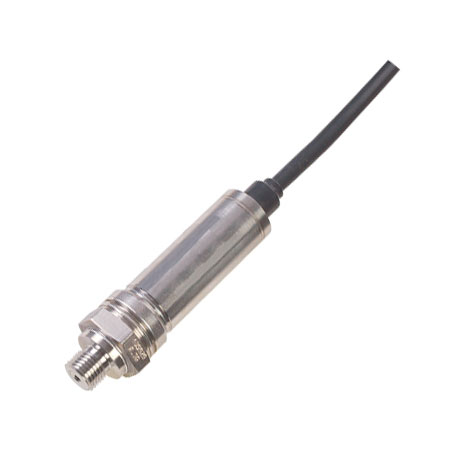





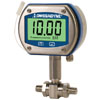
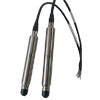
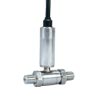

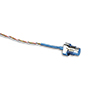



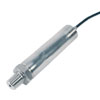

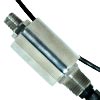
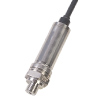



 Transdutores de Pressão
Transdutores de Pressão Transmetteurs de Pression
Transmetteurs de Pression Transductores de Presión
Transductores de Presión Transductores de Presión
Transductores de Presión Pressure Transducers
Pressure Transducers Tryktransducere
Tryktransducere Transducteurs de Pression
Transducteurs de Pression Druckaufnehmern
Druckaufnehmern Trasduttori di Pressione
Trasduttori di Pressione Pressure Transducer
Pressure Transducer Transductor de Presión
Transductor de Presión Pressure Transducer
Pressure Transducer Pressure Transducers
Pressure Transducers Pressure Transducer
Pressure Transducer
 圧力トランスデューサー
圧力トランスデューサー 압력센서
압력센서 Pressure Transducers
Pressure Transducers
 Pressure Transducers
Pressure Transducers
 Pressure Transducers
Pressure Transducers
 Pressure Transducers
Pressure Transducers
 Pressure Transducers
Pressure Transducers